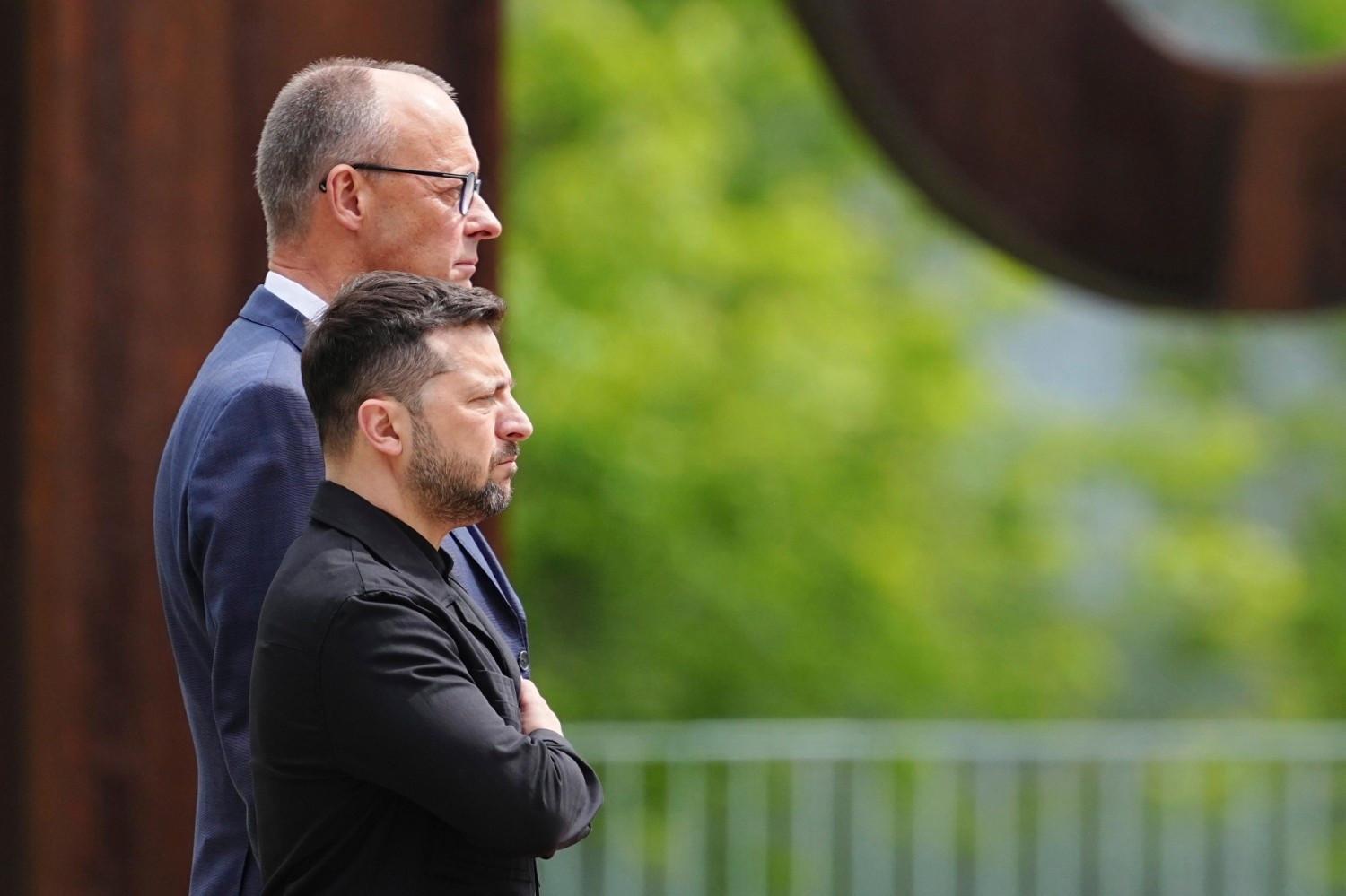
German Chancellor Friedrich Merz, rear, welcomes Ukrainian President Volodymyr Zelenskyy, front, with military honors for a meeting in Berlin, Germany, Wednesday, May 28, 2025
Germany's armed forces have three years to acquire the equipment to tackle a possible Russian attack on NATO territory, the head of military procurement has said.
Defense spending has surged to the forefront of the political agenda since Russia launched its invasion of Ukraine in 2022 and, more recently, with the United States pushing NATO members to increase their commitments.
"Everything necessary to be fully prepared to defend the country must be acquired by 2028," Annette Lehnigk-Emden, head of the Federal Office for Military Procurement, told German daily Tagesspiegel.
Germany's chief of defense, General Carsten Breuer, recently warned that Russia could be in a position to "launch a large-scale attack against NATO territory" as early as 2029.
He said there was a Russian build-up of ammunition and tanks for a possible attack on NATO's Baltic members.
Lehnigk-Emden said that Chancellor Friedrich Merz's new government was enabling the upgrade by allocating hundreds of billions of euros for defense.
She said the priority would be for heavy equipment such as Skyranger anti-aircraft tanks.
Merz has made rearmament a priority of his coalition government to make German forces "the most powerful conventional army in Europe."
Rearmament had already begun under the previous government of Olaf Scholz after Russia launched its war in Ukraine.
U.S. President Donald Trump has raised the stakes further this year by pushing NATO members to increase their defense spending to 5 percent of GDP from the current level of 2 percent.
Defense Minister Boris Pistorius said on June 5 that 50,000 to 60,000 new soldiers would be needed in the coming years to meet the increased NATO defense needs.
Last year, the army had more than 180,000 soldiers and set a goal of exceeding 203,000 by 2031.
Germany is meanwhile looking to speed up the establishment of shelters where the population could find refuge in the event of conflict, according to the president of the German Federal Office for Civil Protection, Ralph Tiesler.
At the end of last year, the authorities began to catalog tunnels, subway stations, underground car parks, and cellars of public buildings that could be converted into bunkers.
"We are going to create one million shelter places as quickly as possible," Tiesler told German newspaper Süddeutsche Zeitung, indicating that a plan to this effect would be presented this summer.